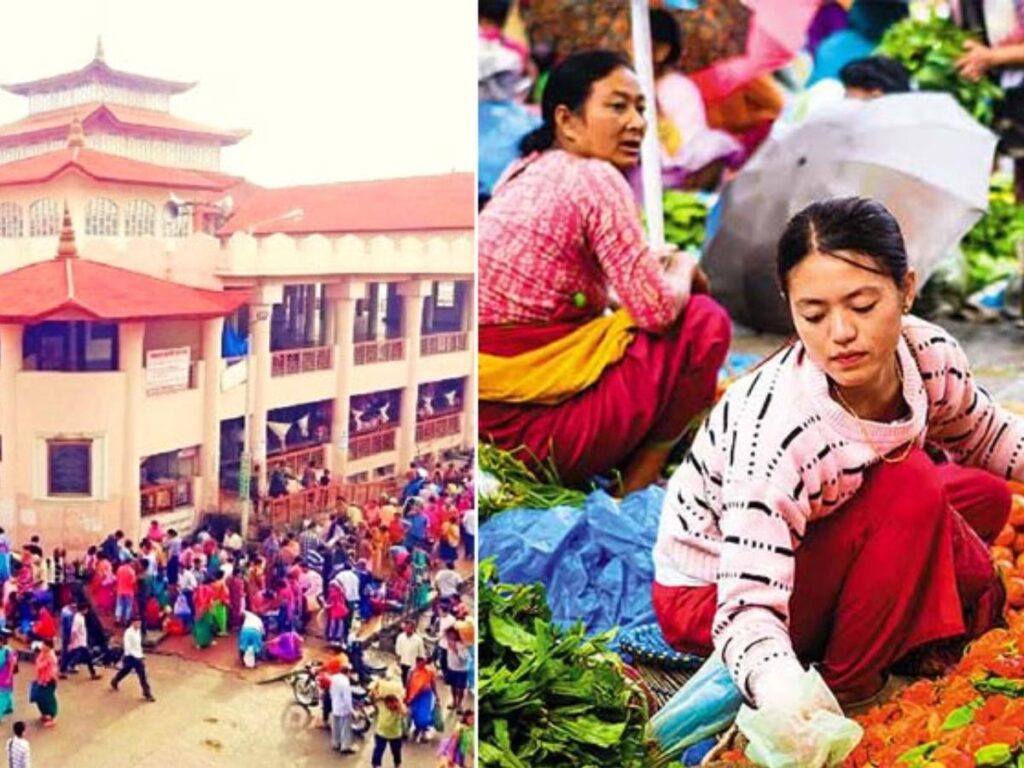Ema Market Imphal (Asia’s Largest Women’s Market)
Alfred Basumatay, an Assistant Professor in Physical Education at Lakshmibai National Institute of Physical Education, Guwahati. is a travel blogger and a YouTuber. He had been teaching as an Assistant Professor at Miranda House College, University of Delhi, New Delhi. The documentary titled EMA MARKET IMPHAL| Asia’s largest Women Market was uploaded on the channel called Traveling Alfred @TravelingAlfred, on 04 July 2019.
He explores one of the most extraordinary markets in the world; Emma Keithel(Women’s market) in the Indian state of Manipur. He gives a deep nature and understanding of the unique Market which is located in the male-dominated society, especially in the field of trade, commerce, and business sector. This particular market gives us remarkable experience and history of women’s role and status in Manipur society. Its unique character and features of the market motivate and inspire me to review and give perspective on the market. The market has a long history and traditions, they took a huge and vital role in the development of political movements and struggles since both colonial and post-colonial society, which are also highlighted in the movie. Apart from that we can see the image of women’s status from this market that they have a huge role in the socio-economic development of the state, and contribute to the activism of gender issues in society. This market provides available every need of household items ranging from knives to modern fashion items. Women from different walks of life come to this market for their daily needs for special events requirements. I would like to give an honest review and analysis in the following parts as Alfred portray in the movie.
Emma Market (Women’s Market) has a long history of more than 500 years. It was founded in 1533 AD, At that time there was a forced Labour system imposed in Manipur called ‘Lallup-Kaba’. At that time when their husband and male members of the families went into labor, women took responsibility for their families and household activities, which led them to work hard and became responsible individuals for the house. They were involved in cultivating their paddy fields, weaved textiles, pot and created several items, especially from bamboo that were sold in the improvised market. Over the period of time, it became a hub for businesswomen and became a proper sector for the market.
Emma Market has a long tradition of being active in the socio-political development of the state. When it comes to gender inequality and the economic status of women in society, this market becomes a hub for information exchanges, societal issues, human rights issues, and socio-political and socio-economical discussions. For example, in 1891 there was a huge economic and political reform during the British rule, during that time women took huge responsibility in sharing their ideas and gave their strong statements about the reform. The union of women was formed and actively took part in socio-political issues. Some policymakers called the market the point that ignited the socio-political engine of society.
In 1904, more than 50,000 women waged war against British imperialism following exploitation and artificial famine triggered by Britishers. Again in 1939, there was a second women’s war (NupiLan) against the British mass exploitation of agrarian products and unjust economic policies. The Emma Keithel become the baseline for mass mobilization and movement against the British. Therefore, Matriarchy in Manipur society is distinctly visible and has strong history from the last six hundred years way before the first wave second wave of feminism emerged on the global scale.
Women traders dressed in traditional garbs-phanek (sarong) and innaphi (shawls) arrive at the market. Emma Market has four blocks that have different section and each section have different authentic items (utensils, toys, bamboo products) to be selling ranging from household needs to traditional and modern fashion. It does maintain in a good manner wise that they don’t mess up with vegetables block and clothes, meats block and groceries. There is different row and a section for handloom and handicraft products, groceries, knives, earthen pots, shawls, puppets, dried fish and also alive fish, local vegetables, forest products, sessional foods, shoes, slipper, wedding attire, tailoring, etc. Women in the market do every job that requires for example there is a women butcher.
From the leaders of the union of women and the administration of the market are handled and taken responsibility for by women only. They are the leading group for the political movement whenever there is injustice in society. They come from different tribes and communities though they can give common and strong voices for women in society. There is a sense of unity among different women with matriarchal ideas. They believe in equality and they also believe in the sense like women can lead a family and categorization of specific gender or sex to run a family is absurd, everyone is responsible regardless of their gender in society. They even go for fundraising for the development and renovation of the market. This gives us the idea that they can handle and maintain the huge markets from lower to top bureaucrats.
Maibam Warish is a Post-Gratute scholar pursuing his Master’s in International Relations, specialization in West Asian Studies, Jamia Millia Islamia, New Delhi. His field of interest includes geopolitical conflicts, India’s West Asia Relations, Energy security, Internal Security Challenges, changing power dynamics in the West Asian region, Israel’s politics, and the issues related to democratization in the region.
References
Alfred Basumatay- Emma Keithel (Women market) in Manipur.
India Food Channel- Women Market in Manipur. India.




